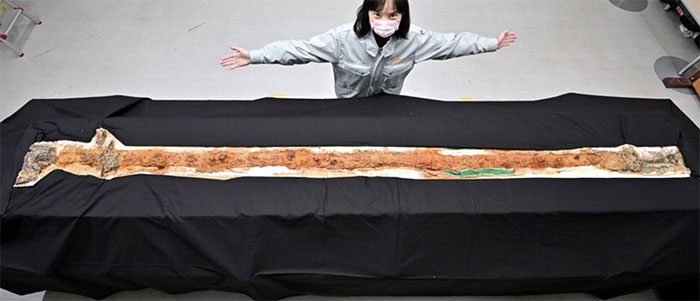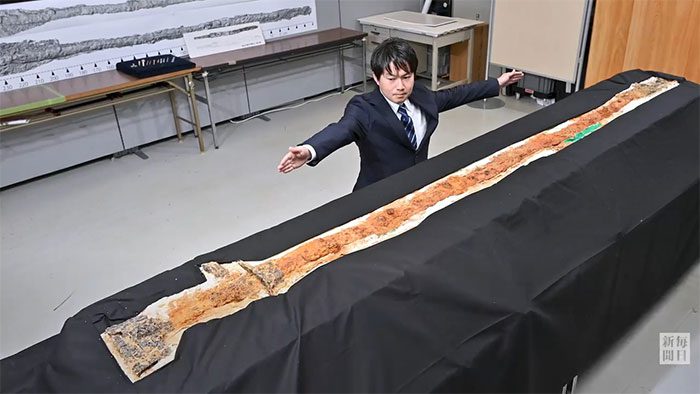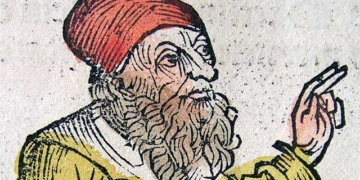The sword unearthed from the Tomiomaruyama Kofun burial mound in Japan has impressed archaeologists due to its unprecedented length and design, combining features of both a single-edged katana and a double-edged sword.

The sword measuring over 2 meters unearthed from Tomiomaruyama Kofun. (Photo: Mainichi).
Recently, Mainichi reported that on March 26, the Kashihara Archaeological Institute in Nara Prefecture and the Nara City Board of Education officially announced the discovery of a giant iron sword known as “dako,” excavated from the largest burial mound in Japan located in Nara City.
This unique hybrid sword, which features a combination of a dagger and a double-edged sword, is believed to be the origin of ceremonial blades created under the control of the Yamato monarchy.
This dako sword measures 2.37 meters in length and 6 cm in width, making it the oldest type of sword in Japan and also the largest iron blade found in East Asia from the Kofun period (approximately the 3rd to 7th century). It was discovered in December 2022 alongside a bronze mirror shaped like a shield from an unexcavated burial site at the Tomiomaruyama Kofun, which dates back to the late 4th century and has a diameter of 109 meters.
The archaeological institute has removed dirt accumulated on the surface of the sword during conservation, while carefully examining the artifact.
Having been buried underground since the late 4th century, for over 1,600 years, the sword’s hilt was not in its original form at the time of excavation and was almost completely reconstructed.
It was found that this hybrid blade had been bent six times, with a total measured length of 2.85 meters when attached to the hilt and scabbard. The scabbard, 2.48 meters long, is made from Japanese large-leaf magnolia wood.

The sword has suffered heavy rusting after more than 1,600 years underground. (Photo: Mainichi).
Masaki Kanekata, the head of the archaeological institute, stated that the recent findings are extremely surprising and serve as important information to clarify the history behind the use of swords in the rituals of the Yamato monarchy.
Naohiro Toyoshima, a professor of archaeology at Nara University and an expert on ancient swords, commented: “The innovative design of these iron blades may have been tested starting from this 4th-century sword. It represents a turning point leading to the 5th century when the shapes of single-edged and double-edged swords began to be designed differently.”
For this reason, Kosaku Okabayashi, the deputy director of the Kashihara Archaeological Institute, remarked that these discoveries indicate the technology of the Kofun period exceeded expectations. The sword and the bronze mirror recently excavated are masterpieces of metalwork from that era.
The giant dako sword is on public display at the Kashihara Archaeological Institute in Nara Prefecture until April 7.




















































